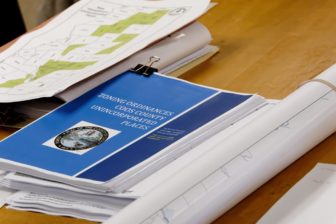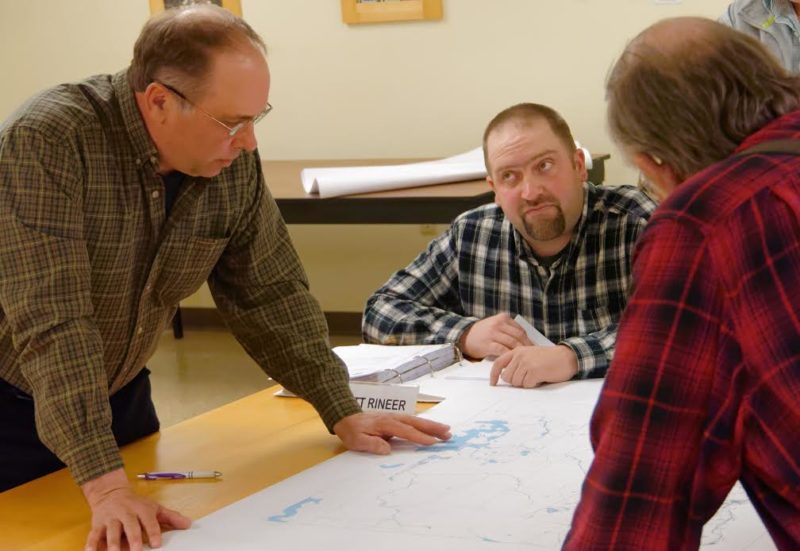By Chris Jensen
For the first time in three decades, the zoning regulations for the unincorporated areas of Coos County are being comprehensively reviewed and updated and by early summer, it is expected that residents will have a chance to comment.
Those zoning regulations will help guide the future of Coos covering issues ranging from how close a building can be built to a stream to the development of a major resort such as the Balsams.

The Coos Country Zoning Regulations haven’t been comprehensively updated for about three decades. Photo by Chris Jensen
Unincorporated areas don’t have any local government. There are 23 of them in Coos County and they are administered by the county government.
“What we are trying to do is balance the traditional recreational uses of the unincorporated places with the reality that as time goes forward you may have more development pressures,” Planning Board Chairman John Scarinza told InDepthNH.org.
Scarinza said there are several goals:
- Making sure the regulations are consistent with state law.
- Determining whether what was enacted 30 years ago is still applicable.
- Determining whether the regulations are consistent with best practices.
- Making the process work more quickly, particularly when dealing with large, complicated projects.
“For the first time we will have a zoning ordinance that looks like what other zoning ordinances look like around the state,” Tara Bamford, a planner from the North Country Council, told the board at a meeting earlier this year.
The review has been going on for several years and Scarinza said so far there haven’t been any dramatic changes in what uses are allowed.
“I think the board has tried very hard to recognize the traditional recreational and other uses in the unincorporated places that have been there for the last 100 years. The water resources, the wildlife uses,” Scarinza said. “But we want people to be able to live there and hopefully contribute to the local economy.”
Scarinza said the review “is a balance and sometimes it can be tricky. What you try to avoid is unintended consequences. You make the best decisions you can.”
Mike Waddell, a member of the planning board, said the importance of the review is huge and it is an enormously complex task. But the updating is crucial to make the regulations clearer, he said.
“The application to build a hotel on Mount Washington is the perfect example of why ambiguity is a bad thing,” Waddell said.
That’s a reference to an informal proposal from two North Country businessmen, Wayne Presby and Joel Bedor, to build a 35-room hotel along The Cog Railway on the flank of Mount Washington.
Under the zoning regulations, that area is part of a “protected district” designed “to protect certain critical areas from inappropriate land use activities which may degrade their environmental quality.”
That would seem to prohibit a hotel. But planning board member Fred King has argued that another section of that regulation gives the planning board the flexibility to approve such a structure.
Waddell said such ambiguity means that the planning board could get sued regardless of what decision it makes.
“The parties have clear issues they can bring up. Just because the ordinance kind of says this, but it kind of doesn’t,” he said.
Currently there are no significant changes to that section.
But David Govatski, a Jefferson resident who opposes the cog hotel, says this is the time to strengthen and clarify that section.
The planning board is expected to continue its review of the draft when it meets on May 24 at 6 p.m. at the North Country Resource Center in Lancaster.






